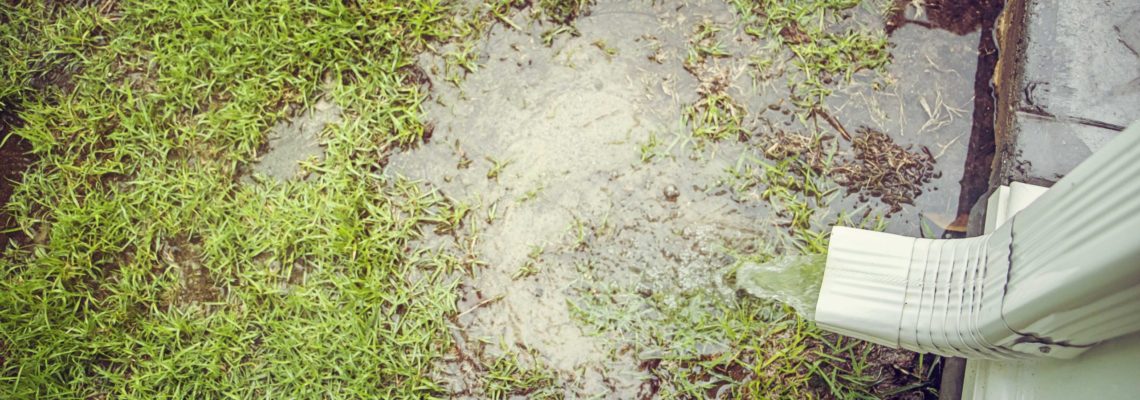A flooded basement can make a big mess and cause lots of damage, whether it’s because of an appliance failure, flood or drainage issues. Here are some of the best ways you can help prevent water from getting into and flooding your basement.
Clean Your Gutters
Your gutters should be cleaned regularly. If they’re blocked with leaves or other debris, roof water can pour down directly into the foundation, which can lead to a flooded basement. If you’re not comfortable climbing up on your own roof with a ladder, consider hiring a professional. If any gutter components are loose, fix those quickly. Use a hose to make sure everything is clear, including the downspouts.
Bury and Extend Your Downspouts
When the gutters are cleaned, make sure the downspouts are as well. Once this is done, extend the downspouts at least five feet from the house to protect the basement further. There are inexpensive extensions available that are simple to install. There’s also the option of installing a drain pipe underground that helps move the run-off away from the foundation. This not only gets the water further away from your home, but it also helps prevent erosion to your lawn near the downspouts.
Check The Slope Around Your Home
The ground should always slope away from your home, not toward it. If the dirt closest to your foundation is flat or sloped toward the home, rainwater can pool close to the foundation and cause your basement to flood. Always make sure the ground slopes away from the house at least six inches per 10 feet of ground in all directions.
Seal Gaps and Cracks
If there are any gaps or cracks in the basement walls, it’s easier for water to seep into the basement. Check around plumbing or on the concrete walls and use specialized waterproofing caulk or cement to fill them. If water is coming up through the ground, however, this won’t work and other solutions will be needed to prevent a flooded basement.
Install A French Drain
Installing a French drain can help move water away from the home if there is a serious issue with water getting into the basement. For this, underground pipes are used to move water away from the foundation, lowering the chance any water will make it inside the basement.
Add Waterproofing to Walls
Your basement walls should be waterproofed with a specialized sealant. There are options for this, such as plastic sheeting or panels, concrete sealers, waterproofing paint, or concrete coatings. Exterior walls can be waterproof, too, as a way to fix any gaps in the foundation. Waterproofing the exterior, however, is more expensive because it involves excavation around the home.
Install A Sump Pump
A sump pump can pump out any water that has gotten into the sump basin. If there is water on the basement floor, the sump pump will automatically turn on and move the water outside the home. Be sure to learn how to pick out the right sump pump and how to test it to make sure it will work when it’s needed.
If your basement does flood, avoid entering it and do not touch the floodwater, as it can be a safety hazard. Instead, have a professional handle the water removal. If you ever experience flooding damage in your basement, contact the professionals at PuroClean Certified Restoration to do the water damage restoration job right.


